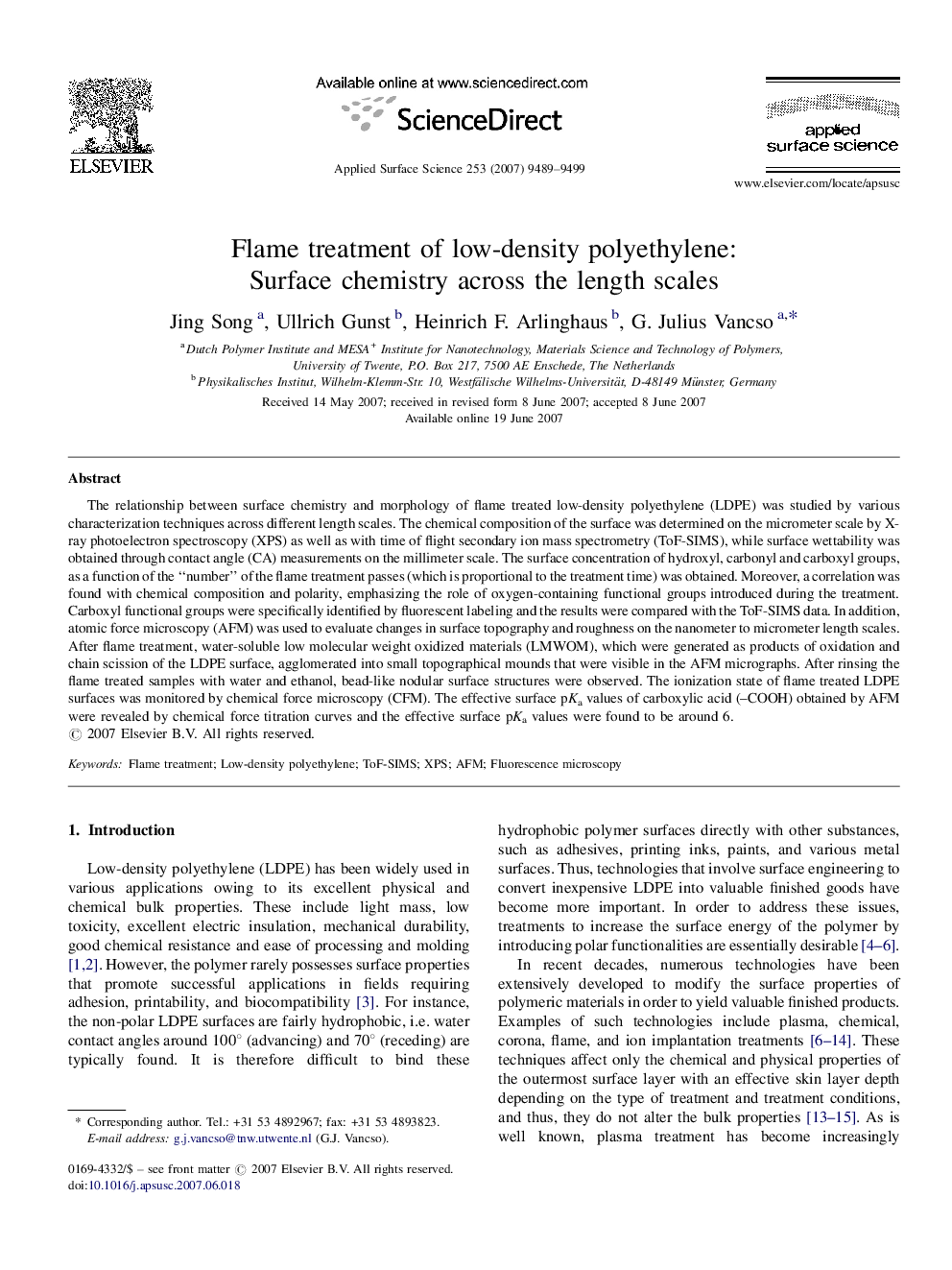| Article ID | Journal | Published Year | Pages | File Type |
|---|---|---|---|---|
| 5365823 | Applied Surface Science | 2007 | 11 Pages |
The relationship between surface chemistry and morphology of flame treated low-density polyethylene (LDPE) was studied by various characterization techniques across different length scales. The chemical composition of the surface was determined on the micrometer scale by X-ray photoelectron spectroscopy (XPS) as well as with time of flight secondary ion mass spectrometry (ToF-SIMS), while surface wettability was obtained through contact angle (CA) measurements on the millimeter scale. The surface concentration of hydroxyl, carbonyl and carboxyl groups, as a function of the “number” of the flame treatment passes (which is proportional to the treatment time) was obtained. Moreover, a correlation was found with chemical composition and polarity, emphasizing the role of oxygen-containing functional groups introduced during the treatment. Carboxyl functional groups were specifically identified by fluorescent labeling and the results were compared with the ToF-SIMS data. In addition, atomic force microscopy (AFM) was used to evaluate changes in surface topography and roughness on the nanometer to micrometer length scales. After flame treatment, water-soluble low molecular weight oxidized materials (LMWOM), which were generated as products of oxidation and chain scission of the LDPE surface, agglomerated into small topographical mounds that were visible in the AFM micrographs. After rinsing the flame treated samples with water and ethanol, bead-like nodular surface structures were observed. The ionization state of flame treated LDPE surfaces was monitored by chemical force microscopy (CFM). The effective surface pKa values of carboxylic acid (-COOH) obtained by AFM were revealed by chemical force titration curves and the effective surface pKa values were found to be around 6.
